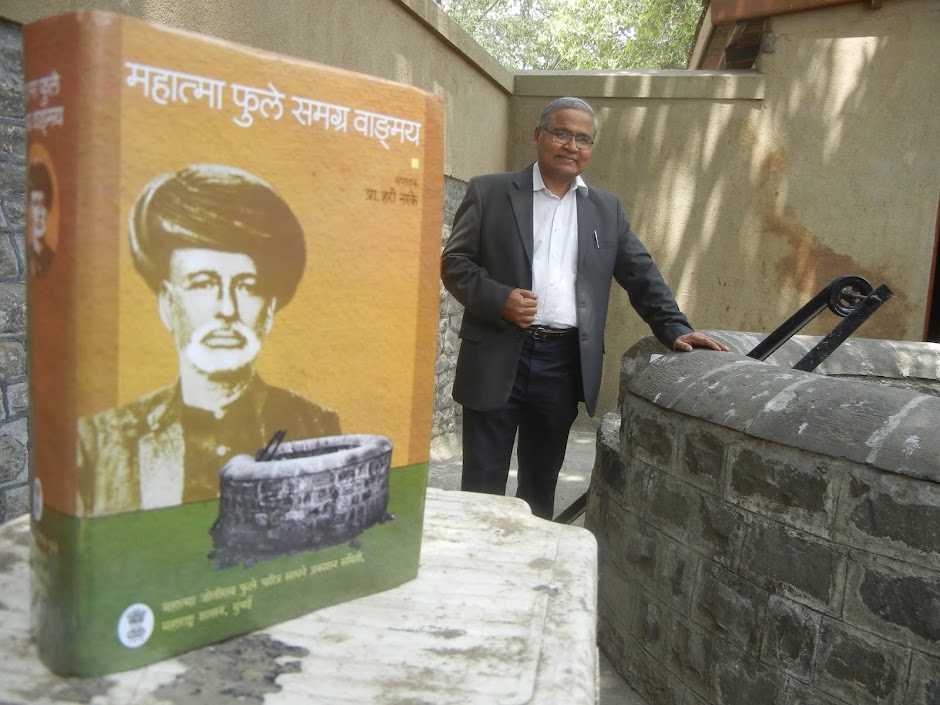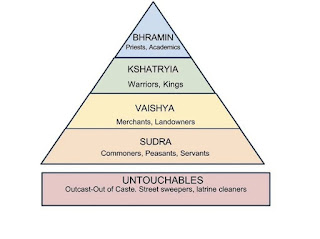Income inequality in India: Top 10% upper caste households own 60% wealth - business standard
Although India’s upper caste households earned nearly 47% more than the national average annual household income, the top 10% within these castes owned 60% of the wealth within the group in 2012, as per a recent paper by the World Inequality Database.
Further, the wealthiest 1% among them grew their wealth by nearly 16 percentage points to 29.4% over the decade to 2012, the paper, entitled ‘Wealth Inequality, Class and Caste in India, 1961-2012’ and published in November 2018, said.
The vast inequality of income and wealth between and within castes highlighted in the paper are significant in the light of the Bharatiya Janata Party government’s new bill to entitle poorer sections among the forward castes to a 10% quota in government jobs and higher education institutions, which has been challenged in court.
Not only is the wealth and income gap large, it is growing--across all castes, in the 36 years till 2016, the share of wealth held by the top 10% has increased 24 percentage points to 55%, as IndiaSpend reported on January 2, 2019.
Inequality between castes
Marginalised caste groups such as the scheduled castes (SCs), scheduled tribes (STs) and other backward castes (OBCs) earn much less than the national household income average of Rs 113,222, according to the paper. SC and ST households earn 21% and 34%, respectively, less than the national average. OBC households fare better but still earn 8% or Rs 9,123 less than the annual Indian average.
Among upper caste groups, Brahmins earn 48% above the national average and non-Brahmin forward castes, 45%, said the paper, ‘Wealth Inequality, Class and Caste in India, 1961-2012’.
On January 9, 2019, the Indian parliament approved the Constitution (124th Amendment) Bill to provide 10% reservation in government jobs and higher education institutions for economically weaker sections of the general category of citizens. These are families that do not belong to SC, ST or OBC categories, and earn less than Rs 800,000 annually, own less than 5 hectares of agricultural land and own residential properties smaller than 1,000 sq.ft.
— IndiaSpend (@IndiaSpend) January 7, 2019
Based on the World Inequality Database, the paper combined data from wealth surveys, the National Sample Survey-All India Debt and Investment Survey (NSS-AIDIS), and millionaire lists. It used the censuses, the NSS-AIDIS and the Indian Human Development survey to explore the evolving relationship between class and caste in India.
Based on the World Inequality Database, the paper combined data from wealth surveys, the National Sample Survey-All India Debt and Investment Survey (NSS-AIDIS), and millionaire lists. It used the censuses, the NSS-AIDIS and the Indian Human Development survey to explore the evolving relationship between class and caste in India.
“Economic ranking follows caste hierarchy, making caste a valid stratification in the society,” the paper noted. “It is important to keep in mind that the standard deviation is also very high in FC groups, i.e. not all are well off in that group. The clustering of social groups in (sic) not perfect.”
Within castes, the highest differences are among forward castes--and growing--and the least wealth differences are to be found among SCs.
“Caste and class are largely co-terminus with few exceptions and life-chances in India continue to be based on one's caste position,” A.R. Vasavi, a social anthropologist and independent researcher, told IndiaSpend. “From allocation of resources, to opportunities, to social capital the distribution pattern matches the skewed social structure; those higher in the ranking gain or get better allocations at the cost of denying the majority.”
India is one of the most unequal countries in the world with the top 10% controlling 55% of the total wealth, up from 31% in 1980, according to the 2018 World Inequality report, as IndiaSpend reported on January 2, 2019.
The National Family Health Survey 2015-16 (NFHS-4) showed that 45.9% of ST population were in the lowest wealth bracket compared to 26.6% of SC population, 18.3% of OBCs, 9.7% of other castes and 25.3% of those whose caste is unknown, IndiaSpend reported on February 28, 2018.
Muslims have lower income than average, non-Hindu, non-Muslim groups have highest
Muslims, while faring better than the SC, ST and OBC population, reported an annual household income 7% less than the national average.
Others (non-Hindu, non-Muslim groups and those who do not fall under the SC, ST and OBC categories) were found to be the richest group, though they make for only 1.5% of the country’s population, the paper said. They earned an annual income of Rs 242,708, twice the annual household income average in India.
PM #NarendraModi announced a cabinet decision today to amend the Constitution & provide 10% reservation for ‘economically backward’ upper castes in direct recruitment in govt services & admissions for higher #education. Follow thread for insights: #Reservation
— IndiaSpend (@IndiaSpend) January 7, 2019
Eligibility will be based on: 1) income < Rs 800,000/yr (less than Rs 66,000/month), equivalent to the salary of an entry-level bureaucrat (IAS officer) or senior software engineer/ developer/ or programmer. #Reservation
Eligibility will be based on: 1) income < Rs 800,000/yr (less than Rs 66,000/month), equivalent to the salary of an entry-level bureaucrat (IAS officer) or senior software engineer/ developer/ or programmer. #Reservation
— IndiaSpend (@IndiaSpend) January 7, 2019
2) Agri land < 5 acre which includes small, marginal, medium & semi-medium holdings that collectively account for 89% of agricultural holdings. Large holdings that account for 10% of agri-land & which declined almost 11% between 2001-2010 not covered. #Reservation
2) Agri land < 5 acre which includes small, marginal, medium & semi-medium holdings that collectively account for 89% of agricultural holdings. Large holdings that account for 10% of agri-land & which declined almost 11% between 2001-2010 not covered. #Reservation
— IndiaSpend (@IndiaSpend) January 7, 2019
3) House < 1,000 sq ft or residential plot <100 yards (less than 900 sq ft) in municipal areas. This is larger than avg size of flats in new building projects across #Mumbai (<900 sq. ft.) & Pune (<1000 sq. ft) launched in 2016. https://t.co/ABdfr4qSF6 #Reservation
3) House < 1,000 sq ft or residential plot <100 yards (less than 900 sq ft) in municipal areas. This is larger than avg size of flats in new building projects across #Mumbai (<900 sq. ft.) & Pune (<1000 sq. ft) launched in 2016. https://t.co/ABdfr4qSF6 #Reservation
— IndiaSpend (@IndiaSpend) January 7, 2019
4) Or a residential plot < 209 yards (less than 1,800 sq ft) in non-notified (non-residential) areas. https://t.co/GkDH3IQMpg #Reservation
4) Or a residential plot < 209 yards (less than 1,800 sq ft) in non-notified (non-residential) areas. https://t.co/GkDH3IQMpg #Reservation
— IndiaSpend (@IndiaSpend) January 7, 2019
The new 10% #reservation will be over and above the existing reservations & will not affect the quota for scheduled castes/scheduled tribes/other backward castes, according to news reports.
The new 10% #reservation will be over and above the existing reservations & will not affect the quota for scheduled castes/scheduled tribes/other backward castes, according to news reports.
— IndiaSpend (@IndiaSpend) January 7, 2019
The proposed bill, to be introduced tomorrow, will amend Articles 15 & 16 of the Constitution as the 10% reservation exceeds the #SupremeCourt limit of 50% on quotas. #Reservation
The proposed bill, to be introduced tomorrow, will amend Articles 15 & 16 of the Constitution as the 10% reservation exceeds the #SupremeCourt limit of 50% on quotas. #Reservation
— IndiaSpend (@IndiaSpend) January 7, 2019
Critics have already pointed out that the move announced towards the end of the winter session of Parliament means it would not be cleared soon. https://t.co/yp1v4o7CFw https://t.co/6Pg8MKrH6V https://t.co/3nVGX11iIW#Reservation
Critics have already pointed out that the move announced towards the end of the winter session of Parliament means it would not be cleared soon. https://t.co/yp1v4o7CFw https://t.co/6Pg8MKrH6V https://t.co/3nVGX11iIW#Reservation
Among OBCs and STs too, top 10% had cornered most wealth. Top 10% of both groups held around 52% of wealth in 2012 and top 10% of SCs' share increased three percentage points to 46.7% till 2012
Shreehari Paliath | IndiaSpend
Last Updated at January 14, 2019 08:50 IST
Last Updated at January 14, 2019 08:50 IST



No comments:
Post a Comment